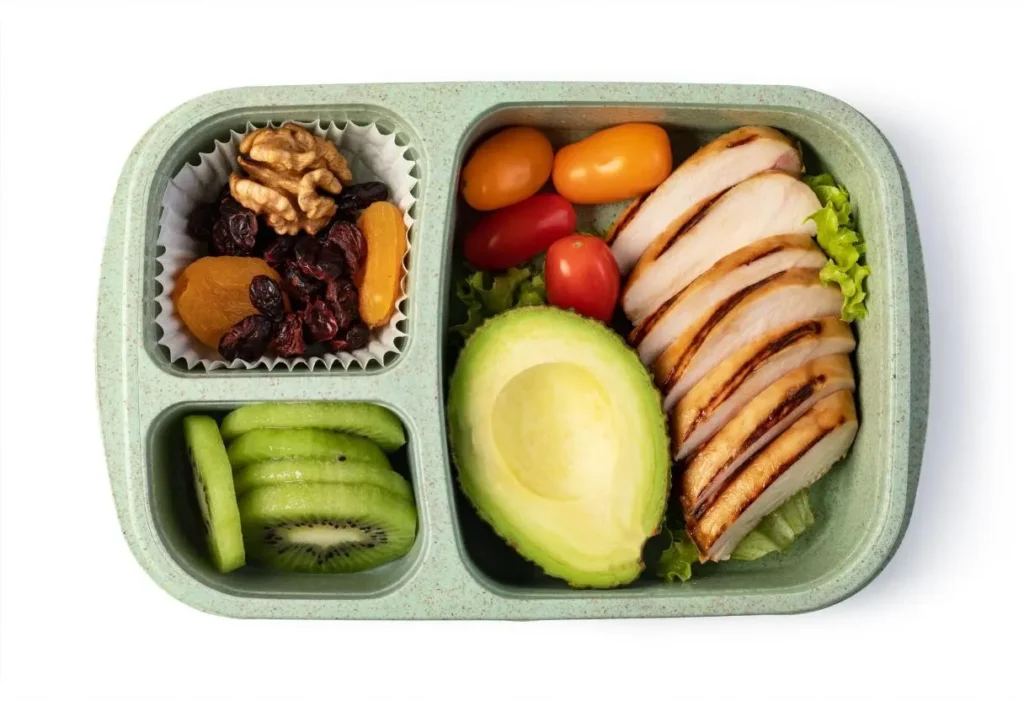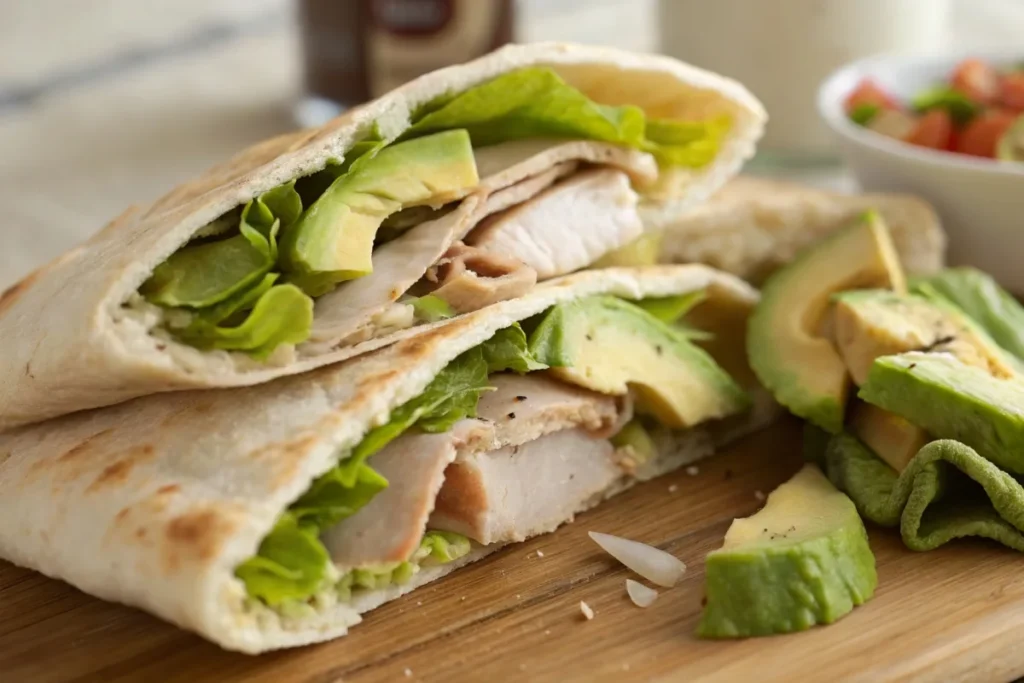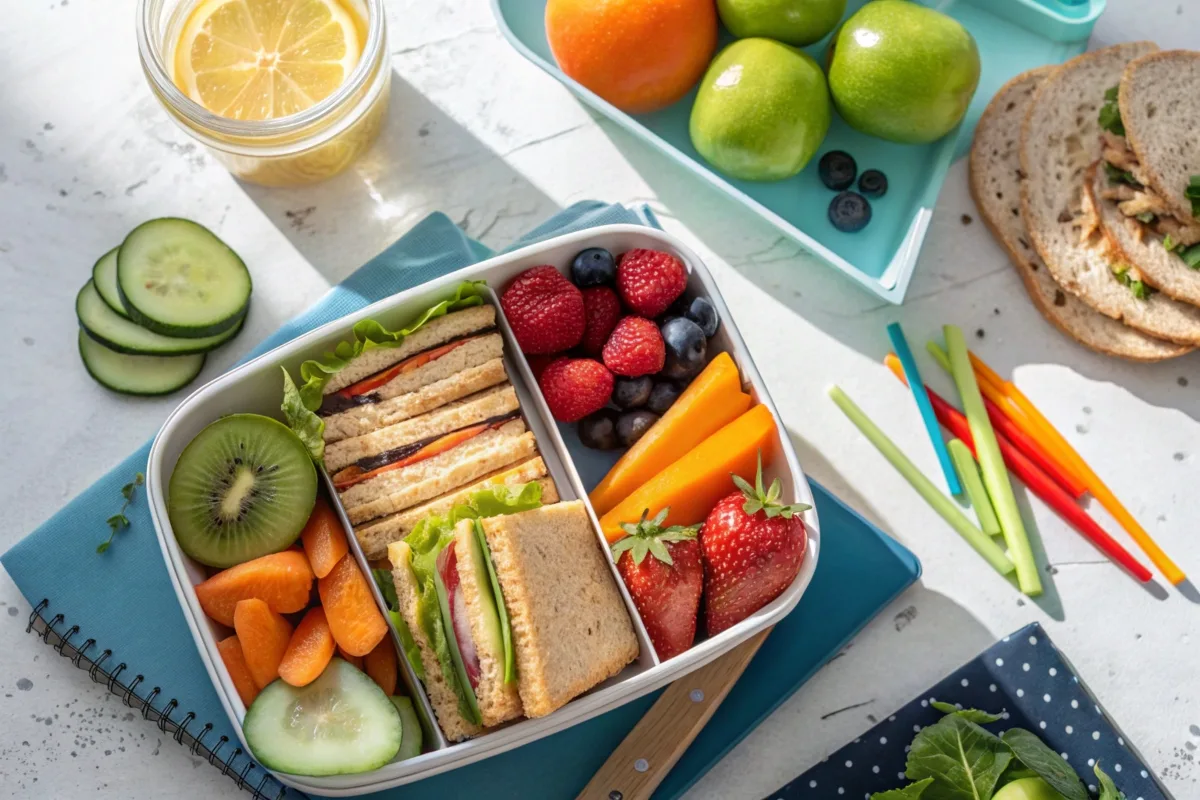Banish midday mealtime stress with lunch ideas for tweens that keep them energized and excited.
Introduction
Tweens—generally ages 9 to 12—are in a fascinating stage of life marked by rapid growth, curiosity, and a growing sense of independence. Since many tweens spend a large portion of their day at school, making sure they have access to balanced, appealing, and easy-to-enjoy lunches becomes paramount. However, crafting these lunches can seem like a puzzle, especially with busy schedules and sometimes finicky taste buds. Therefore, creating nutritious lunch ideas for tweens requires both creativity and practicality.
In this comprehensive guide, we will explore strategies to keep your tween satisfied and nourished. First, we will delve into why balanced midday meals matter. Next, we’ll discuss which nutrients are crucial for this age group. Finally, we’ll provide tips on how to streamline lunch prep—even on your busiest mornings. You will also discover innovative recipes, from sandwiches and soups to vegetarian options and quick-fix dishes that utilize leftovers. Moreover, we will answer pressing questions about lunch ideas for tweens of various ages, offering solutions for 10-year-olds, 13-year-olds, middle schoolers, and high schoolers alike.
By the time you reach the end of this article, you will not only have an arsenal of lunch ideas for tweens but also feel empowered to adapt those ideas to match your child’s evolving tastes. Let us dive into the fundamentals and explore a world of delicious, tween-approved meals!
- Introduction
- The Significance of Balanced Lunches for Tweens
- Core Nutritional Elements in Tween Lunches
- Streamlining Lunch Prep for Busy Schedules
- Lunch Ideas for Tweens: From Sandwiches to Soups
- Quick and Simple Recipe: Turkey and Avocado Pita Pocket
- Smart Side Snacks and Hydration
- Helping Picky Eaters Embrace Variety
- Frequently Asked Questions (FAQ)
- Conclusion
The Significance of Balanced Lunches for Tweens
Why Nutrition Matters for This Age Group
Tweens are amidst a whirlwind of development—physically, cognitively, and emotionally. During this period, their appetite for life (and snacks) grows substantially. However, they need balanced meals more than ever to support academic focus, physical stamina, and mood regulation. In addition, consistent exposure to nutritious meals encourages healthier eating patterns that can last well beyond the tween years.
Moreover, growing bones require adequate calcium and vitamin D, while developing muscles benefit from quality protein sources. Whole grains supply sustained energy, and colorful vegetables and fruits deliver essential vitamins. Therefore, it is crucial to supply them with a wide variety of nutrient-packed foods during lunch to maintain their energy throughout the day.
Transitioning to Greater Independence
Many tweens start choosing their meals without constant supervision. Therefore, guiding them toward better choices now can help them develop a lifelong habit of reaching for healthier options first. In addition, encouraging them to participate in meal planning boosts their sense of ownership and self-confidence. Consequently, they are more likely to finish the meals they helped create, thereby reducing food waste and lunchtime battles.
Core Nutritional Elements in Tween Lunches
Balancing Macronutrients
- Protein: For starters, lean meats such as chicken and turkey, along with fish, legumes, and low-fat dairy, not only keep tweens full but also aid muscle growth.
- Carbohydrates: Similarly, choosing whole grains—such as brown rice, whole-wheat bread, and oatmeal—helps sustain steady energy levels. On the other hand, refined carbs often lead to energy spikes and crashes.
- Healthy Fats: Moreover, foods like avocados, nuts, seeds, and oils, such as olive oil, support brain health and further aid vitamin absorption.
Micronutrient Must-Haves
- Vitamins and Minerals: A “rainbow diet” of fruits and veggies ensures they receive vitamins A, C, E, K, as well as minerals like iron and potassium.
- Calcium and Vitamin D: Essential for strong bones, found in dairy, fortified cereals, and leafy greens.
Staying Hydrated
Often overlooked, hydration is key for cognitive focus and physical well-being. Encouraging water intake—possibly flavored with citrus slices or berries—can help reduce sugary drink consumption. Therefore, pack a water bottle with your tween’s lunch, guiding them to develop a habit of drinking water regularly.
Streamlining Lunch Prep for Busy Schedules
Planning Ahead
First and foremost, a few minutes of weekly planning can save hours of stress later. For example, consider drafting a simple meal plan on Sunday. Jot down lunch ideas for tweens that incorporate the core foods your child enjoys—like sandwiches, wraps, or simple pastas. Then, create a specific grocery list to ensure you have all items on hand.
Time-Saving Tips
- Batch Cooking: To begin with, prepare basics—such as chicken breasts, roasted veggies, cooked beans, or lentils—over the weekend. Then, during the week, you can easily mix and match these elements to create different lunch bowls or salads.
- Leftover Makeover: Likewise, transform leftover dinner into a brand-new lunch. For example, a grilled chicken breast can quickly become a sandwich filling, while stir-fried veggies can be repurposed to top whole-wheat noodles.
- Pre-Chopped Produce: Additionally, wash and chop fruits and veggies in advance, storing them in airtight containers. As a result, this strategy dramatically reduces morning prep time.
The Perfect Container and Safe Storage
Investing in sturdy, leak-proof containers and insulated lunch bags can be a game-changer. For hot meals, a thermos keeps soups or stews warm. Meanwhile, an ice pack ensures perishable items (like yogurt or sliced turkey) stay cool and safe until lunchtime.
Lunch Ideas for Tweens: From Sandwiches to Soups
It is tempting to settle for the same sandwich daily. However, variety not only adds excitement but also ensures a broader range of nutrients. Therefore, consider exploring the following categories of tween-friendly lunches to keep your child invested in mealtime.
Sandwiches, Wraps, and Roll-Ups
Sandwiches remain a universally beloved lunch staple, yet they need not be dull. For instance, replace mayo with hummus or mashed avocado for healthier fats and extra flavor. Try these easy combos:
- Turkey, Cheese, and Veggie Sandwich
- Whole-wheat bread with sliced turkey, cheddar cheese, lettuce, and tomato.
- Add a pinch of black pepper or an herbed spread for a gourmet twist.
- Tortilla Roll-Ups
- Spread a whole-wheat tortilla with mashed beans or hummus, then add grated carrots, lettuce, and diced chicken.
- Roll tightly and slice into pinwheels for a bite-sized delight.
- Nut Butter & Fruit
- Elevate the classic peanut butter and jelly by using almond or sunflower seed butter.
- Slice strawberries or add a thin layer of unsweetened fruit spread.
Pro Tip: To avoid soggy bread, place “wet” ingredients—like tomatoes—between lettuce layers or lightly toast the bread.
Salads with a Twist
Some tweens might view salads as “rabbit food,” yet you can combat that perception by adding hearty ingredients:
- Pasta Salad
- Use whole-wheat rotini or penne.
- Toss with diced cucumber, bell pepper, cherry tomatoes, and a lean protein such as grilled chicken or beans.
- Drizzle with a basic vinaigrette or store-bought Italian dressing.
- Chopped Salad
- Start with crisp romaine or iceberg lettuce.
- Add small cubes of turkey or tofu, shredded carrots, cheese cubes, and a sprinkle of seeds.
- Serve the dressing on the side so the greens stay fresh.
- Buddha Bowl-Style Salad
- Include quinoa or brown rice, roasted sweet potatoes, chickpeas, and spinach.
- Top with a light tahini or ranch dressing for a creamy finish.
By focusing on vibrant ingredients and diverse textures, your tween may actually look forward to that “green stuff.”
Hearty Pasta and Noodle Dishes
Tweens often gravitate toward pasta, so why not harness that love for an energizing lunch?
- Cold Pasta Salad
- Mix cooked whole-grain pasta with olives, cucumbers, feta cheese, and Italian dressing for a Mediterranean-inspired twist.
- Involve your tween in adding their favorite fresh herbs, such as basil.
- Noodle Soups in a Thermos
- Chicken noodle soup or ramen can travel in a thermos.
- Add shredded carrots and spinach for a dose of veggies.
- Stir-Fry Noodles
- Combine leftover stir-fried noodles with vegetables and a lean protein, like diced chicken or tofu.
- Season with a low-sodium soy sauce or teriyaki sauce.
Soul-Warming Soups and Stews
In colder months or for tweens who prefer something cozy, soups and stews pack nutrients in a single container:
- Minestrone Soup
- Simmer tomatoes, beans, carrots, celery, and small pasta.
- Add herbs like rosemary or oregano for extra depth.
- Chicken and Veggie Soup
- A simple broth-based soup with chicken, diced potatoes, carrots, and peas.
- Use an insulated container to keep it warm and safe.
- Bean Chili
- Combine kidney beans, black beans, and diced tomatoes with mild spices for a hearty vegetarian option.
- Serve with a small bag of whole-grain crackers or a piece of cornbread.
Tip: For more delicious chili options, take a look at our brisket chili recipe. It can be easily adapted for milder spice levels to suit tweens.
Bento-Style Boxes

Bento lunches encourage variety without overwhelming portion sizes. Essentially, they are compartmentalized meals featuring different bites:
- Protein Corner: Edamame, cheese cubes, grilled chicken strips, or boiled eggs.
- Carb Corner: Rice balls, mini sandwiches, or whole-grain crackers.
- Fruit & Veggie Section: Sliced cucumbers, baby carrots, grapes, or apple slices.
- Dip or Dressing: Hummus, low-fat ranch, or Greek yogurt.
Your tween might love the excitement of discovering mini “surprises” in each section.
Vegetarian or Vegan Options
Plant-based lunches can be colorful, filling, and appealing:
- Veggie Wrap
- Fill a whole-wheat tortilla with roasted bell peppers, zucchini, onions, and a tasty sauce like tahini or hummus.
- Top with fresh spinach for extra crunch.
- Chickpea Salad Sandwich
- Mash chickpeas with a spoonful of vegan mayo, finely diced celery, and a pinch of salt.
- Spread on whole-wheat bread for a protein-packed sandwich.
- Veggie Soup
- Substitute chicken broth with veggie broth and add lentils, peas, carrots, and potatoes.
- For more vegetarian soup inspiration, read our vegan chicken noodle soup guide.
Reinventing Leftovers
Why Leftovers Rule
Leftovers reduce both food waste and morning workload. Therefore, if you prepare extra portions during dinner, you can swiftly transform them into the next day’s lunch.
- Taco Filling Turned Salad
- Repurpose leftover ground turkey or chicken taco meat by tossing it with lettuce, diced tomatoes, and grated cheese.
- Pack salsa or guacamole on the side.
- Pizza to Calzone
- Fold leftover pizza toppings in a store-bought dough or tortilla.
- Bake until the cheese melts for an easy, handheld meal.
- Roasted Veggies to Wraps
- Combine leftover roasted vegetables with hummus or mashed beans.
- Roll them in a tortilla for a quick wrap.
For more ideas on transitioning leftover soup or turkey into a flavorful dish, explore our tips on how to add flavor to bland turkey soup. That post offers additional methods to transform your dinner into an appetizing lunch.
Quick and Simple Recipe: Turkey and Avocado Pita Pocket

When mornings get hectic, having a no-fuss recipe on standby can save the day. This Turkey and Avocado Pita Pocket is not only delicious but also rich in protein, healthy fats, and fiber. Best of all, it is easy enough for tweens to help prepare.
Ingredients
- 1 whole-wheat pita bread (halved to create two pockets)
- 3–4 slices of low-sodium turkey breast (or leftover cooked turkey)
- 1 small avocado, sliced or mashed
- 1 small tomato, thinly sliced
- A handful of lettuce or baby spinach leaves
- 1 tablespoon of Greek yogurt (optional, can use hummus or light mayo)
- A sprinkle of salt and pepper to taste
Step-by-Step Instructions
- Gather and Prep:
- Wash the lettuce, slice the tomato, and halve the pita bread. If you prefer mashed avocado, mash it in a small bowl with a pinch of salt and pepper.
- Layer the Spread:
- If using Greek yogurt or hummus, spread a thin layer inside each pita pocket to prevent dryness.
- For added flavor, you can mix a tiny bit of lemon juice into the yogurt or hummus.
- Add the Turkey:
- Fold or slice the turkey and gently place it inside the pita. Ensure it is distributed evenly for each pocket.
- Avocado Magic:
- Slip the avocado slices (or spread the mashed avocado) alongside the turkey. This creates a creamy texture.
- Top with Veggies:
- Insert the tomato slices and lettuce or spinach leaves.
- Lightly season with salt and pepper.
- Close and Secure:
- Press gently on the sides of the pita pocket to close it. You can wrap it in foil or place it in a leak-proof container.
- Pack for Lunch:
- Include a small pack of baby carrots or apple slices to round out the meal.
Nutritional Info (Per 100g)
Below is an approximate nutritional breakdown of this Turkey and Avocado Pita Pocket (values may vary based on brands/ingredients):
| Nutrient | Amount per 100g | % Daily Value* |
|---|---|---|
| Calories | ~210 kcal | 10% |
| Protein | ~10 g | 15% |
| Carbohydrates | ~28 g | 10% |
| Total Fat | ~6 g | 8% |
| Fiber | ~5 g | 18% |
| Sodium | ~290 mg | 12% |
*Percent Daily Values are based on a 2,000-calorie diet.
Smart Side Snacks and Hydration
Nutritious Snacks
- Fruit Kebabs: Alternate chunks of pineapple, grapes, and strawberries on skewers.
- Veggie Cups: Carrot and cucumber sticks served with a small container of hummus.
- Whole-Grain Crackers and Cheese: Provides protein, fiber, and a satisfying crunch.
Balanced Beverages
- Encourage water or milk (low-fat dairy or fortified alternatives).
- Infuse water with citrus slices, mint leaves, or berries for added flavor.
- Avoid sugary sodas and high-sugar fruit juices that cause rapid blood sugar spikes.
Helping Picky Eaters Embrace Variety
Involving Tweens in Meal Planning
Because many tweens like to explore new things, invite them to shop for produce, select ingredients, or experiment with simple cooking tasks. Consequently, they feel ownership over what they eat and are more willing to give new foods a try.
Gradual Flavor Introductions
Rather than abruptly serving them an entirely unfamiliar dish, incorporate a new ingredient or spice alongside familiar favorites. For instance, if your tween loves spaghetti, mix in a small portion of roasted squash or spinach. Over time, you can gradually increase the proportion of the new ingredient.
Appealing Presentations
Use cookie cutters to shape sandwiches or fruit slices, creating engaging visuals. Similarly, small containers for dips and sauces can make vegetables more enticing. Because sight often influences taste, a more exciting look can encourage them to sample what is inside.
Frequently Asked Questions (FAQ)
Below are answers to some of the most common questions from parents seeking lunch ideas for tweens:
What can a 13 year old make for lunch?
A 13-year-old can handle a variety of easy-to-prepare meals, especially if they are encouraged to explore the kitchen:
- Simple Grilled Cheese or Quesadillas: Using whole-wheat bread or tortillas.
- Salad Jars: Layer lettuce, chopped veggies, and protein in a jar—then add dressing before eating.
- Leftover Pasta Bake: Warm up leftover pasta with cheese and veggies in the oven or microwave.
Encourage them to read recipes thoroughly and practice safe cooking habits, such as turning off the stove or oven and washing ingredients correctly.
What can I make for lunch for my 10 year old?
For 10-year-olds, look for simple but nutritious meals:
- Wraps with Lean Protein: Chicken or turkey paired with lettuce, cheese, and a mild sauce.
- Mini Bento Boxes: Include bite-sized fruits, veggies, crackers, cheese sticks, and yogurt.
- Hummus and Pita Platter: Include carrot sticks, cucumber slices, and cubed chicken or tofu.
These choices offer essential nutrients without overwhelming younger tweens.
What to make for middle school lunch?
Middle schoolers often crave variety and independence:
- Burrito Bowls: Layer brown rice, beans, diced chicken (or tofu), cheese, and veggies.
- DIY Pizza Bagels: Top whole-grain bagels with tomato sauce, cheese, and veggies. Bake in advance.
- Hearty Soups in a Thermos: Minestrone, veggie noodle soup, or mild chili.
Add a side of fruit or a homemade granola bar to keep them fueled until the final bell rings.
What to give high school kids for lunch?
High schoolers are more open to complex flavors but also have bigger appetites:
- Meal Prep Grain Bowls: Combine quinoa or farro, chickpeas, roasted vegetables, feta cheese, and a zesty dressing.
- Wrap It Up: A large tortilla filled with roasted chicken, avocado, lettuce, and chopped tomatoes.
- Stir-Fried Noodles: Bulk them up with protein, vegetables, and a savory sauce.
Offering diverse and substantial meals helps them avoid fast-food temptations and midday fatigue.
Conclusion
In summary, planning lunch ideas for tweens does not have to be an overwhelming task. By combining healthy proteins, whole grains, and colorful fruits and vegetables, you create meals that not only taste great but also fuel your tween’s growth and daily activities. Incorporate planning, set aside time for batch cooking, and encourage your child to assist in the kitchen for a smoother lunch routine.
Ultimately, balanced lunches support their physical health, enhance academic performance, and even strengthen emotional well-being. Therefore, continue exploring new flavors, make the most of leftovers, and maintain open communication with your tween about what they enjoy. This approach ensures that lunchtime becomes both nourishing and exciting, setting the stage for a positive long-term relationship with food.

